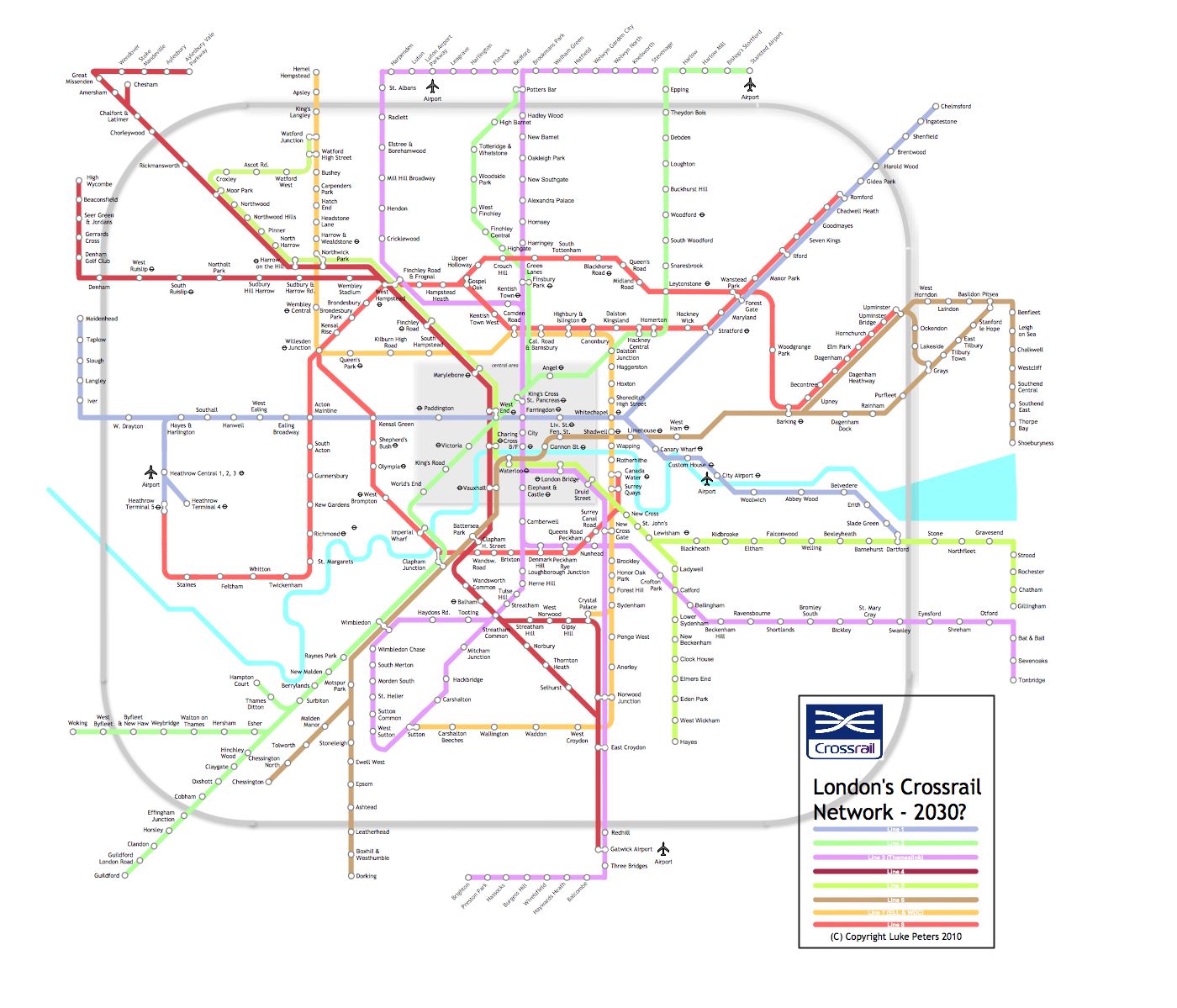Crossrail 1 is already long overdue and over-budget (currently costing around £19 billion). Next in the pipeline for London is the even-more-ambitious NE-SW axis Crossrail 2 Line. The budget for this one is currently estimated to be roughly twice that of Crossrail 1 - at around £36 bn!
I have already criticised the project in detail. Unlike Crossrail 1, which adds no new station catchment to London, Crossrail 2 is daringly going to include one new station at King's Road Chelsea, (local opposition notwithstanding). And boy, what a station it will be, budgeted to cost £1.2 bn - more, incidentally, than the budget for the Millennium Dome! Other than that, it merely joins the dots and mainly just offers shorter commute times to and from the Surrey stockbroker belt.
As usual, London must get what it wants, even as the provinces languish, struggling here and there for scraps of funding for small-scale, unsophisticated, unambitious, and usually desperately inadequate, tram lines (if they're lucky). We have heard the tired political rhetoric a hundred times: "London must secure its place as a world city... London must remain competitive to attract investment... London is growing fast and badly needs infrastructure... " So, it goes on...
But I have another idea. What if the government were to spend taxpayers' money on alternative schemes in the provinces? What could be had for £36 billion?
We have heard the tired political rhetoric a hundred times: "London must secure its place as a world city..." etc.
Well, let us use a little mathematics, and for reference let us look at Madrid, a city which has vastly expanded its Metro network in recent years for relatively little outlay.
Madrid manages to build one mile of Metro line (in tunnel, by the way and including stations) at an average cost of £62 million per mile. As a further jab in the guts, let me add, they complete their projects on time, within four years.
So, £36 billion divided by £62 million gives us a figure of a staggering 580 miles. Now, "Wait," I hear you say, "those are Spanish prices". They are indeed. So, let us be conservative, factor in some good old British rip-offs, incompetence, wastage and vanity, and double the building costs for the United Kingdom. That reduces the track length to a mere 290 miles.
290 miles would equate to more than seven Metro networks on the scale of Prague Metro, which has three lines and a track length of just over 40 miles, serving 61 stations.
The UK could have SEVEN Prague Metro networks for the price of Crossrail 2.
Seven 40-mile underground networks like Prague's would handsomely rescue the following UK cities, which are crying out for proper mass transit: Manchester, Birmingham, Leeds, Bristol, Glasgow, Edinburgh, Belfast. You may disagree with these choices. If so, take your own pick.
I am aware that some of these cities already have some light rail schemes, and Glasgow even has a Subway line, but they are nowhere near adequate.
Put in visual terms, the choice is either this:
Put another way: One new station, or 427 new stations! You read that right.
Now I am willing to concede that certain cities may not require 40 miles of metro, nor perhaps as much as three lines. Perhaps some of them could be served with one or two, or 40 stations instead of 61. In which case, there are savings to be made. Rejoice.
But this is the question: Will the British government make an honourable attempt at boosting its big provincial cities? Will it ever consider that Manchester may have to be competitive against Munich? Or Leeds be competitive with Lyon? Or Bristol be competitive with Bremen? That its commitments to 21st-century sustainability and development extend all over the nation and not just to Greater London? Because Britain's continental neighbours certainly do not neglect their provincial infrastructure for the benefit of their capitals.
Will common sense ever win out over vanity?






















